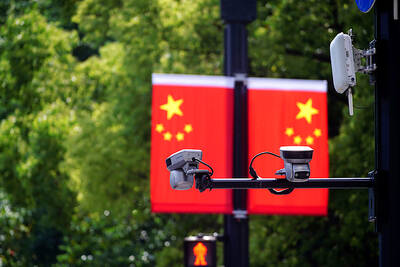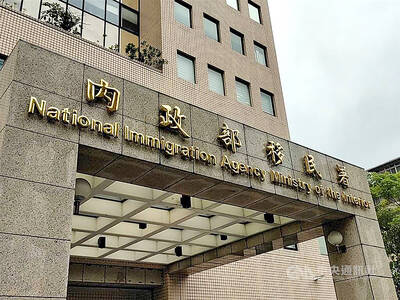The Environmental Protection Administration (EPA) yesterday launched its annual showcase for soil and groundwater protection in Taipei, drawing hundreds of global delegates to learn about the agency’s efforts to prevent soil and water contamination and the nation’s pollution-monitoring technologies.
The three-day exhibition, dubbed the International Conference of Remediation and Management of Soil and Groundwater Contaminated Sites, highlights partnerships between the EPA, local precision manufacturing companies and academic experts to develop and apply new environmental protection technologies.
For example, National Taiwan University associate professor Huang Chien-fen (黃千芬), an expert on sediment surveying, is guiding the agency on how to operate a sub-bottom profiler — a machine that performs real-time data analysis on sediments to find areas with excessive levels of heavy metals.
Agency official Chang Chih-wei (張志偉) said that the device helps the EPA locate areas that need to be excavated to prevent heavy metals from being consumed by freshwater animals or tapped for irrigation and entering the food chain.
Regarding dioxin sampling, EPA Environmental Analysis Laboratory division head Chen Yuan-wu (陳元武) said the agency is collaborating with a private firm to develop a continuous centrifugal system to sample dioxins in groundwater, wastewater and drinking water from purification plants.
The machine uses filter paper and foam to extract dioxins in water samples before frozen samples undergo detailed analysis, he said.
The machine, although developed over a period of more than three years, cost about NT$500,000 (US$16,150), making it more time-saving than its predecessors and more cost-efficient than its Japanese counterparts, which cost twice as much, he said.
On managing defunct factories, agency official Sun Tung-ching (孫冬京) said plant or land owners must pass the EPA’s soil analysis before they can set up factories in other places or lease their land to other operators.
There are about 120,000 defunct plants nationwide, she said.

CAUTION: Based on intelligence from the nation’s security agencies, MOFA has cautioned Taiwanese travelers about heightened safety risks in China-friendly countries The Ministry of Foreign Affairs (MOFA) yesterday urged Taiwanese to be aware of their safety when traveling abroad, especially in countries that are friendly to China. China in June last year issued 22 guidelines that allow its courts to try in absentia and sentence to death so-called “diehard” Taiwanese independence activists, even though Chinese courts have no jurisdiction in Taiwan. Late last month, a senior Chinese official gave closed-door instructions to state security units to implement the guidelines in countries friendly to China, a government memo and a senior Taiwan security official said, based on information gathered by Taiwan’s intelligence agency. The

The National Immigration Agency (NIA) said yesterday that it will revoke the dependent-based residence permit of a Chinese social media influencer who reportedly “openly advocated for [China’s] unification through military force” with Taiwan. The Chinese national, identified by her surname Liu (劉), will have her residence permit revoked in accordance with Article 14 of the “Measures for the permission of family- based residence, long-term residence and settlement of people from the Mainland Area in the Taiwan Area,” the NIA said in a news release. The agency explained it received reports that Liu made “unifying Taiwan through military force” statements on her online

Taiwan Semiconductor Manufacturing Co (TSMC), the world’s largest contract chipmaker, said yesterday that it is looking to hire 8,000 people this year, at a time when the tech giant is expanding production capacity to maintain its lead over competitors. To attract talent, TSMC would launch a large-scale recruitment campaign on campuses across Taiwan, where a newly recruited engineer with a master’s degree could expect to receive an average salary of NT$2.2 million (US$60,912), which is much higher than the 2023 national average of NT$709,000 for those in the same category, according to government statistics. TSMC, which accounted for more than 60 percent

Tung Tzu-hsien (童子賢), a Taiwanese businessman and deputy convener of the nation’s National Climate Change Committee, said yesterday that “electrical power is national power” and nuclear energy is “very important to Taiwan.” Tung made the remarks, suggesting that his views do not align with the country’s current official policy of phasing out nuclear energy, at a forum organized by the Taiwan People’s Party titled “Challenges and Prospects of Taiwan’s AI Industry and Energy Policy.” “Taiwan is currently pursuing industries with high added- value and is developing vigorously, and this all requires electricity,” said the chairman